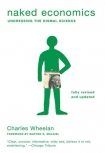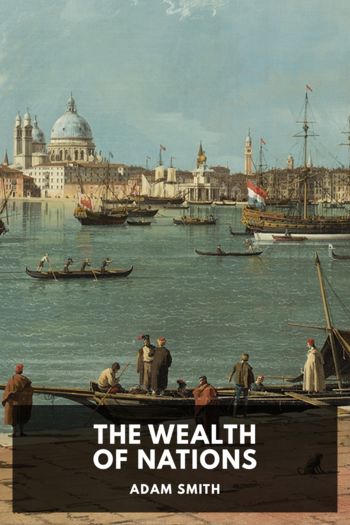Naked Economics, Wheelan, Charles [open ebook .txt] 📗

Book online «Naked Economics, Wheelan, Charles [open ebook .txt] 📗». Author Wheelan, Charles
Daewoo later severed the relationship with its Bangladeshi partner, but the seeds for a booming export industry were already planted. Of the 130 workers trained by Daewoo, 115 left during the 1980s to start their own garment-exporting firms. Mr. Easterly argues convincingly that the Daewoo investment was an essential building block for what became a $3 billion garment export industry. Lest anyone believe that trade barriers are built to help the poorest of the poor, or that Republicans are more averse to protecting special interests than Democrats, it should be noted that the Reagan administration slapped import quotas on Bangladeshi textiles in the 1980s. I would be hard pressed to explain the economic rationale for limiting the export opportunities of a country that has a per capita GDP of $1,500.
Most famously, cheap exports were the path to prosperity for the Asian “tigers”—Singapore, South Korea, Hong Kong, and Taiwan (and for Japan before that). India was strikingly insular during the four decades after achieving independence from Britain in 1947; it was one of the world’s great economic underachievers during that stretch. (Alas, Gandhi, like Lincoln, was a great leader and a bad economist; Gandhi proposed that the Indian flag have a spinning wheel on it to represent economic self-sufficiency.) India reversed course in the 1990s, deregulating its domestic economy and opening up to the world. The result is an ongoing economic success story. China, too, has used exports as a launching pad for growth. Indeed, if China’s thirty provinces were counted as individual countries, the twenty fastest-growing countries in the world between 1978 and 1995 would all have been Chinese. To put that development accomplishment in perspective, it took fifty-eight years for GDP per capita to double in Britain after the launch of the Industrial Revolution. In China, GDP per capita has been doubling every ten years. In the cases of India and China, we’re talking about hundreds of millions of people being lifted out of poverty and, increasingly, into the middle class. Nicholas Kristof and Sheryl WuDunn, Asian correspondents for the New York Times for over a decade, have written:
We and other journalists wrote about the problems of child labor and oppressive conditions in both China and South Korea. But, looking back, our worries were excessive. Those sweatshops tended to generate the wealth to solve the problems they created. If Americans had reacted to the horror stories in the 1980s by curbing imports of those sweatshop products, then neither southern China nor South Korea would have registered as much progress as they have today.13
China and Southeast Asia are not unique. The consultancy AT Kearney conducted a study of how globalization has affected thirty-four developed and developing countries. They found that the fastest-globalizing countries had rates of growth that were 30 to 50 percent higher over the past twenty years than countries less integrated into the world economy. Those countries also enjoyed greater political freedom and received higher scores on the UN Human Development Index. The authors reckon that some 1.4 billion people escaped absolute poverty as a result of the economic growth associated with globalization. There was bad news, too. Higher rates of globalization were associated with higher rates of income inequality, corruption, and environmental degradation. More on that later.
But there is an easier way to make the case for globalization. If not more trade and economic integration, then what instead? Those who oppose more global trade must answer one question, based on a point made by Harvard economist Jeffrey Sachs: Is there an example in modern history of a single country successfully developing without trading and integrating with the global economy?14
No, there is not.
Which is why Tom Friedman has suggested that the antiglobalization coalition ought to be known as “The Coalition to Keep the World’s Poor People Poor.”
Trade is based on voluntary exchange. Individuals do things that make themselves better off. That obvious point is often lost in the globalization debate. McDonald’s does not build a restaurant in Bangkok and then force people at gunpoint to eat there. People eat there because they want to. And if they don’t want to, they don’t have to. And if no one eats there, the restaurant will lose money and close. Does McDonald’s change local cultures? Yes. That was what caught my attention a decade ago when I wrote about Kentucky Fried Chicken arriving in Bali. I wrote, “Indonesians have their own version of fast food that is more practical than the Colonel’s cardboard boxes and Styrofoam plates. A meal bought at a food stall is wrapped in a banana leaf and newspaper. The large green leaf retains heat, is impermeable to grease, and can be folded into a neat package.”
By and large, the banana leaves of the world appear to be losing to cardboard. Not long ago I attended a business gathering with my wife in Puerta Vallarta, Mexico. Puerta Vallarta is a lovely city that spills down from the hills to the Pacific Ocean. The focal point of the city is a promenade that runs along the ocean. Near the middle of that promenade is a point that juts out into the ocean, and at the end of that point, on what I would reckon is one of the most valuable pieces of real estate in the city, is





Comments (0)